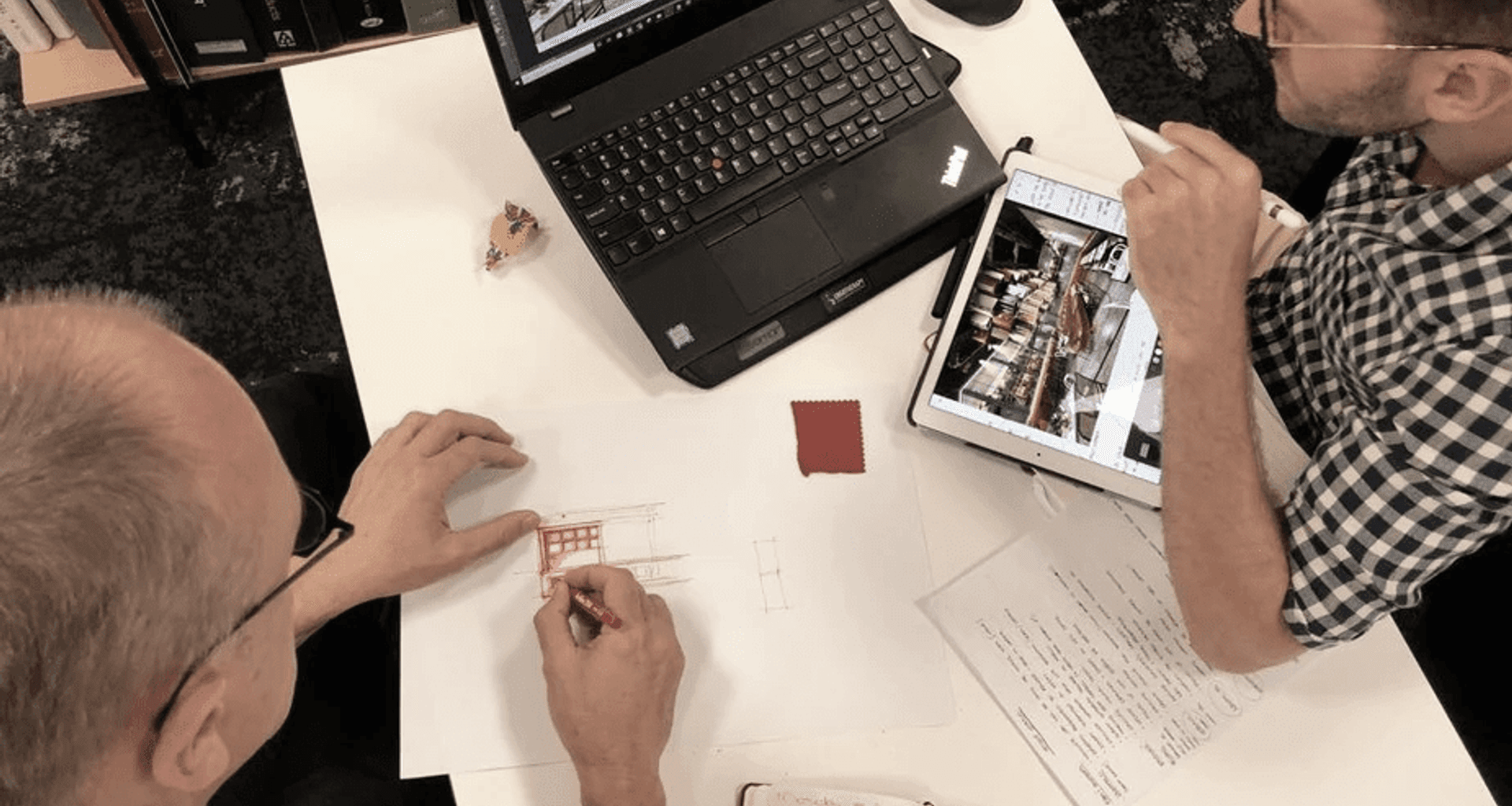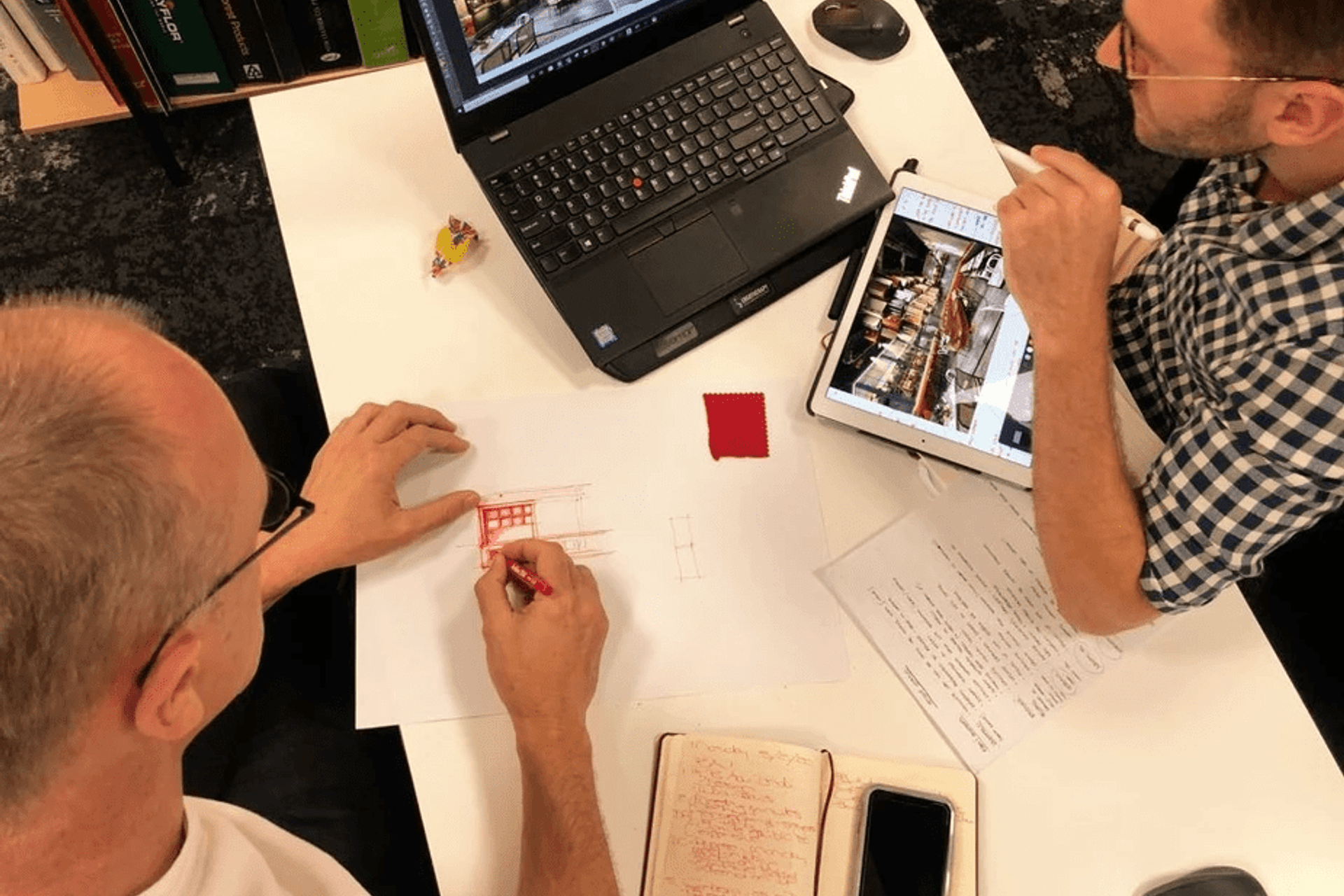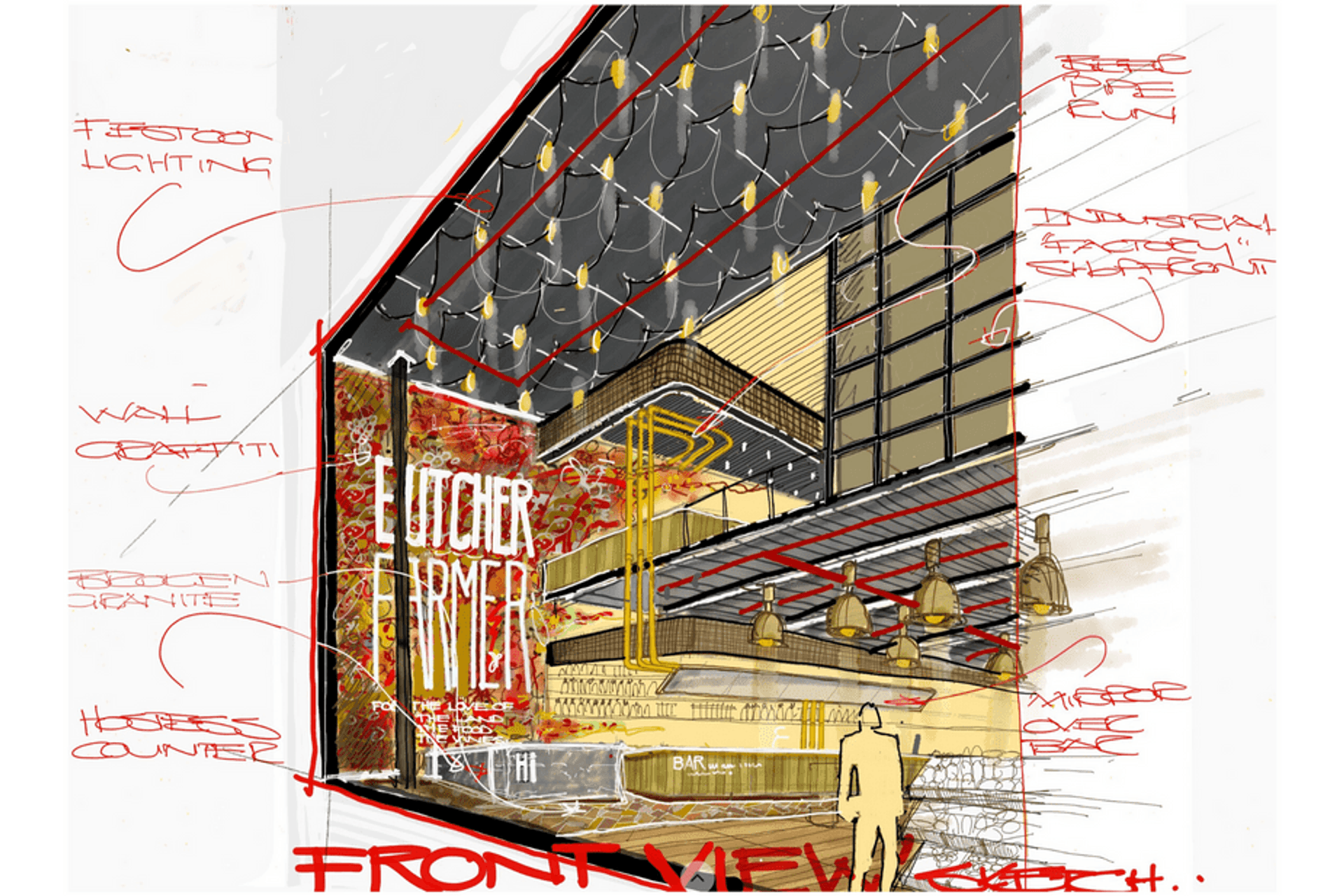Design: What is it really?

What is design and what exactly makes for a good design? At Design Partnership, we focus on two salient areas of design that impact how we behave.

To answer this question, one must perhaps first look at the origin of Design - and no, it did not start with the Industrial Revolution, although this perhaps marked the emergence of 'design' into the general consciousness of people. It could be debated that design started more than 3 million years ago when the first African Hominid struck two stones together to produce a thin flake and used this as a tool to pierce the hide of an animal. As this learning evolved and as tools were manufactured to produce other tools, such as sharpening a stick, it marked the slow departure of early hominids from other primates and allowed us to gradually ‘see’ the design before it’s brought into reality.
Fast forward to Design today and it has become so multifaceted and so layered that a universal definition, though attempted by many, is probably not possible anymore. The definition depends on who you ask.
According to the Oxford dictionary "Design is a plan or drawing produced to show the look and function or workings of a building, garment or other objects before it is made". Wikipedia perhaps gets it closer to the truth by including objects, systems, and processes into the equation. Perhaps the most accurate and democratic description comes from the Strate School of Design in Paris: “Generally speaking, it is the process of envisioning and planning the creation of objects, interactive systems, buildings, vehicles, etc. It’s user-centred, i.e., users are at the heart of the design thinking approach. It is about creating solutions for people, physical items or more abstract systems to address a need or a problem”.

Design is thus a process of imagining a future outcome that does not yet exist to solve existing problems for people. Perhaps the Cognitive Psychologist, Herbert A Simon put it best; “Everyone designs who devises courses of action aimed at changing existing situations into preferred ones”.
“Nobody wants ugly utility. Nobody wants ugly function.” - John Hoke, Nikes Chief Design Officer
Although Design, unlike art, needs utility, it is still often a delicate mix of logic, function, and an emotional connection to make for meaningful, useful, and purposeful design. Hence, one often hears the phrase that great design is the balance of Art and Science. John Hoke, Nikes Chief Design Officer, so aptly put it: "Nobody wants ugly utility. Nobody wants ugly function."

We have established that design needs utility, i.e., it needs to solve an existing problem, therefore the outcome needs to be novel. "Novel" however is dangerous. It turns out that there is something as "too novel". Ironically although the world is obsessed with novelty and hype, humans are creatures of habit and prefer the comfort of the familiar when it comes to everyday user experiences. Therefore, a new unconventional innovative user interface, interior layout, product, flow pattern, furniture arrangement, or colour scheme may be intriguing at first, but the distance it sits away from the most popular centre will also determine the measure of friction in the uptake or adoption of the design outcome. This is simply because humans find comfort in the familiar and habit. Thousands of years of evolution also means that we are hard-wired to behave in very specific and patterned ways that are difficult to impossible to break.
A design solution, therefore, needs to be cognizant of this 'market bullseye' and move away just enough for the outcome to be both novel and utilitarian - too far away and the solution runs the risk of not being adopted at scale and thus failing at solving a problem for the audience or market bullseye for which it was intended.
Good Design is a balance between Novelty and Utility.
Design has certainly come a very long way since the days of pounding stones against each other to produce a tool, but if a design today fails to become a useful shard, it simply remains a stone. A shiny one perhaps, but still a stone.
